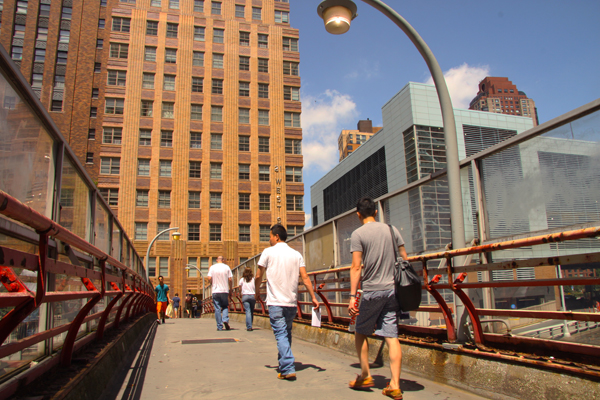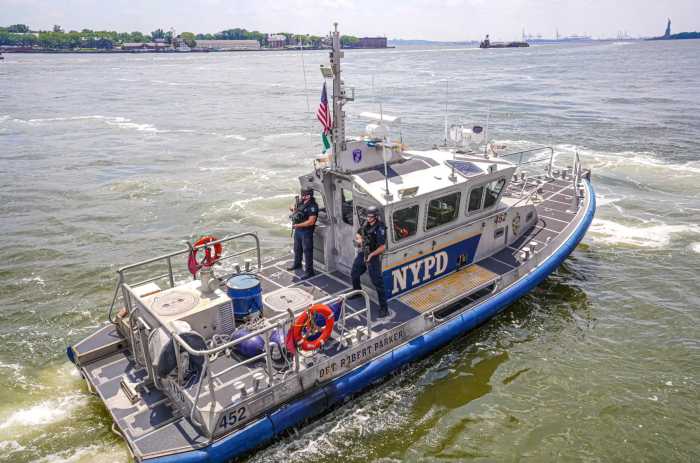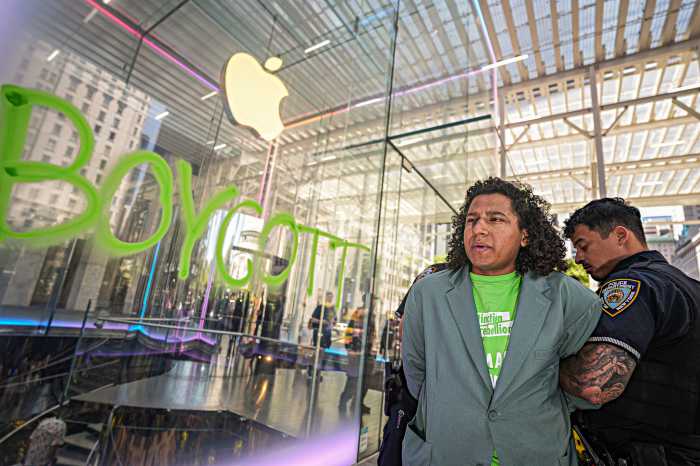
Downtown Express photo by Yoon Seo Nam
BY KAITLYN MEADE
It’s old and rusting, the concrete steps cracked and worn with use, there is a net attached to the underside to protect the cars passing beneath it from falling debris — the Morris St. pedestrian bridge’s long and useful life is drawing to a close.
This little walkway provides a vital vein from Battery Park City across the Brooklyn-Battery Tunnel to the Financial District. Lower Manhattan was separated in two by the construction of the tunnel between 1940 and 1951, interrupted for a few years during World War II. Morris St. remained divided until the pedestrian bridge was built in 1951, slightly offset from the street itself.
In Fall 2014, the walkway will be getting an update, the city Department of Design and Construction announced before the Financial District Committee of Community Board 1. The committee generally approved of design which includes elevating the bridge to deal with flooding concerns, installing a ramp on both sides, and allowing space for decorative planters and lighting.
A study in 2009 showed that the pedestrian bridge had a condition rating of 3.44 out of 7, said D.D.C.’s Bharat Parekh. He reassured the committee does not mean it is in danger of crumbling. “Unsafe is probably below three, but it depends…” he said.
There was some concern from the C.B. 1 committee that safety conditions on the bridge will decline further by the time the construction begins. The Dept. of Design and Construction estimates that the bridge will be at a 3.04 rating by that time. If necessary, the bridge conditions can be monitored every six months.
The envisioned design will make the bridge more handicap accessible by replacing one set of stairs on each side with a ramp, one pointing downtown on the Washington St. end and one pointing uptown on the Greenwhich St. side, said Parekh. The logic behind the design is based on traffic patterns during rush hour which show that the heaviest traffic flow comes up Washington St. and disperses across the bridge upward into the Financial District and flows the other was between 5 and 7 p.m.
The installation of the ramp requires that the bridge be moved south toward the tunnel entrance, which is a more level area.
The Community Board has put time into trying to get funding to redo Edgar park and make it an amenity. Asked to consider a design which would allow the bridge to remain closer to where it is now, which is a better location. That may require a switch in which way the ramps point.
The bridge is planned to take two years to complete, with the first phase of pre-construction taking six months, the construction process taking 15 months, and cleanup and close-out taking three. The next step is to finalize the design this winter before requesting bids from contractors in Spring 2014.






























